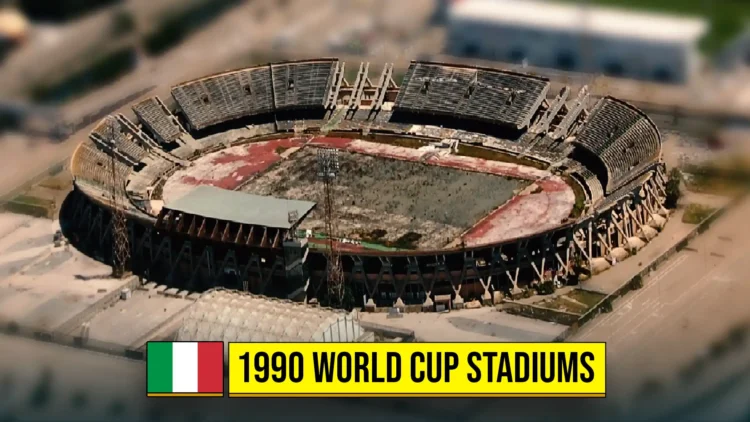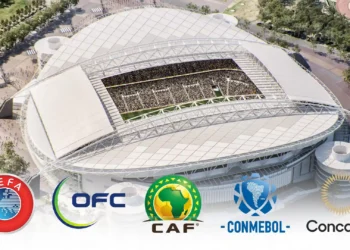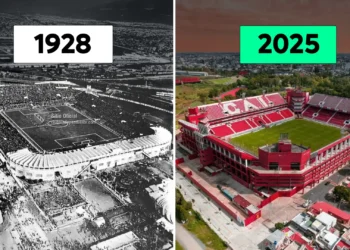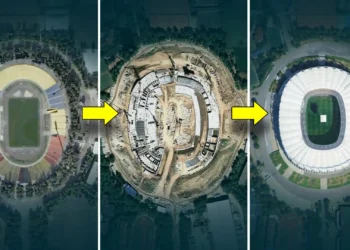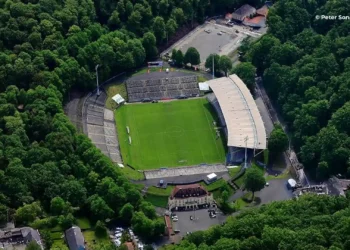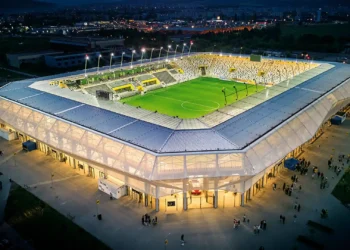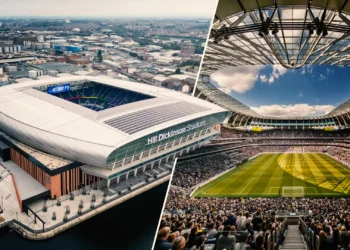The 1990 FIFA World Cup in Italy — “Italia ’90” — is remembered for its drama, passion, and the iconic Nessun Dorma soundtrack.
It also brought one of the largest and most expensive stadium investment programs in football history. Italy used 12 stadiums, many renovated or rebuilt for the tournament. More than 35 years later, their legacies are mixed: some remain central to Italian football, while others were demolished or struggle with age.
Stadium-by-Stadium Breakdown
🏟️ Stadio Olimpico (Rome)
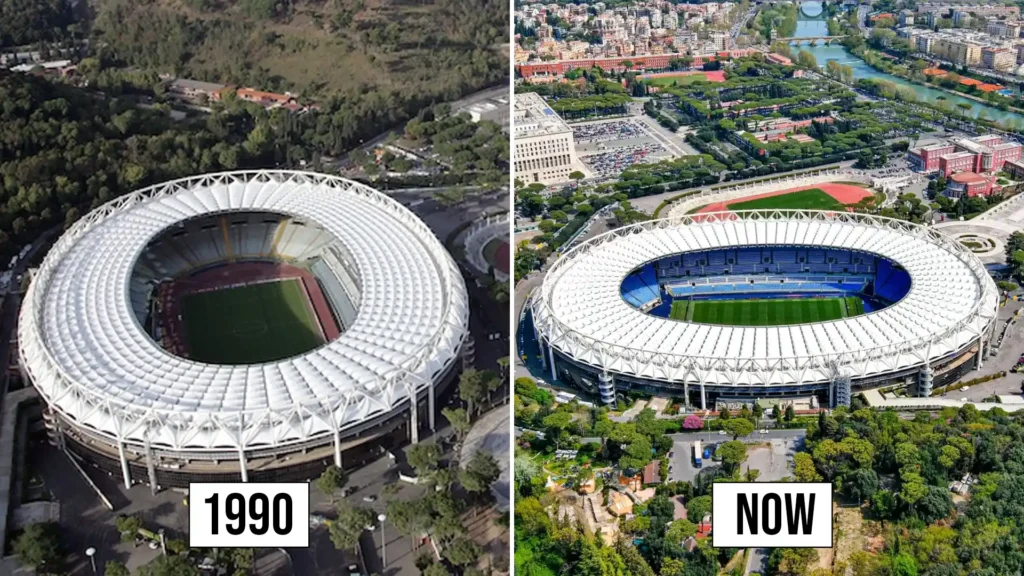
- Status: Thriving
- Capacity: 70,000.
- Hosted the 1990 Final (West Germany vs Argentina).
- Home to AS Roma & Lazio, plus Coppa Italia finals and Italian national team matches.
- Renovated for Euro 2020, still one of Italy’s premier venues.
🏟️ Stadio San Siro / Giuseppe Meazza (Milan)
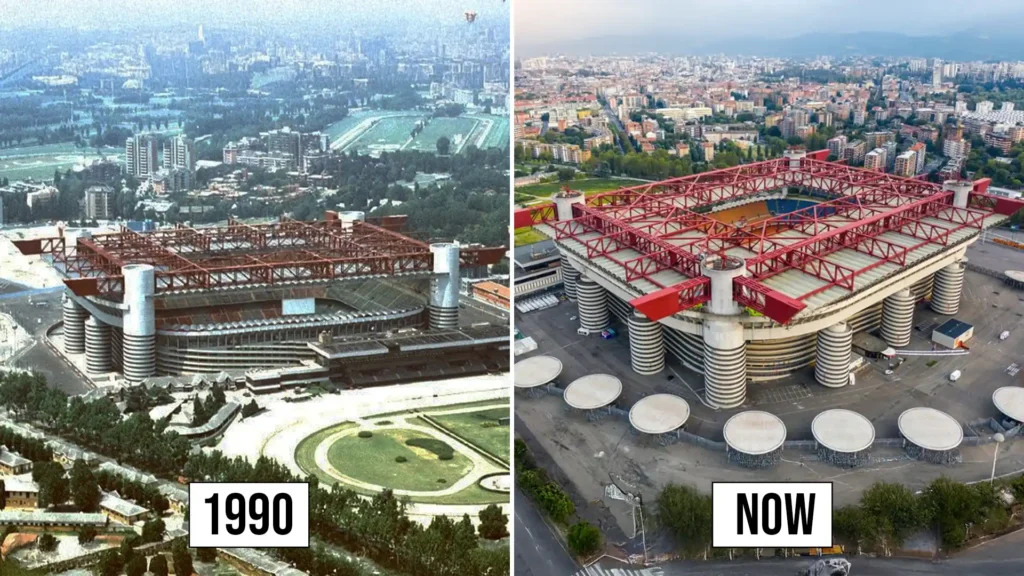
- Status: Iconic, future uncertain
- Capacity: 80,000.
- Hosted the opening match of Italia ’90.
- Still home to AC Milan & Inter.
- Plans exist for a new stadium; San Siro may eventually be demolished.
🏟️ Stadio San Paolo (Naples, now Stadio Diego Armando Maradona)
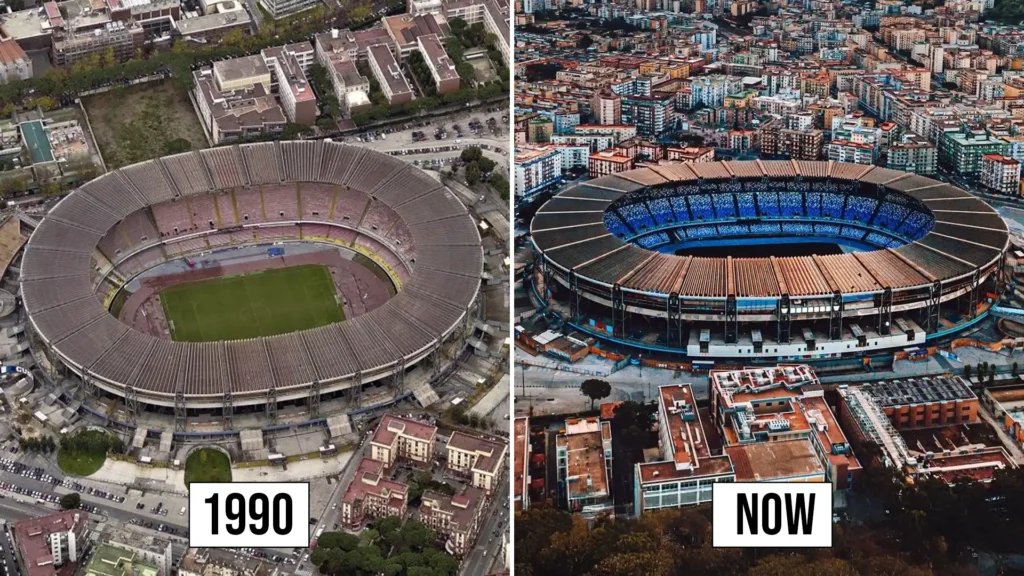
- Status: Thriving
- Capacity: 54,000.
- Legendary venue where Maradona played for Napoli, and where Italy lost the 1990 semifinal to Argentina.
- Renovated in 2019 and renamed after Maradona in 2020.
🏟️ Stadio delle Alpi (Turin)
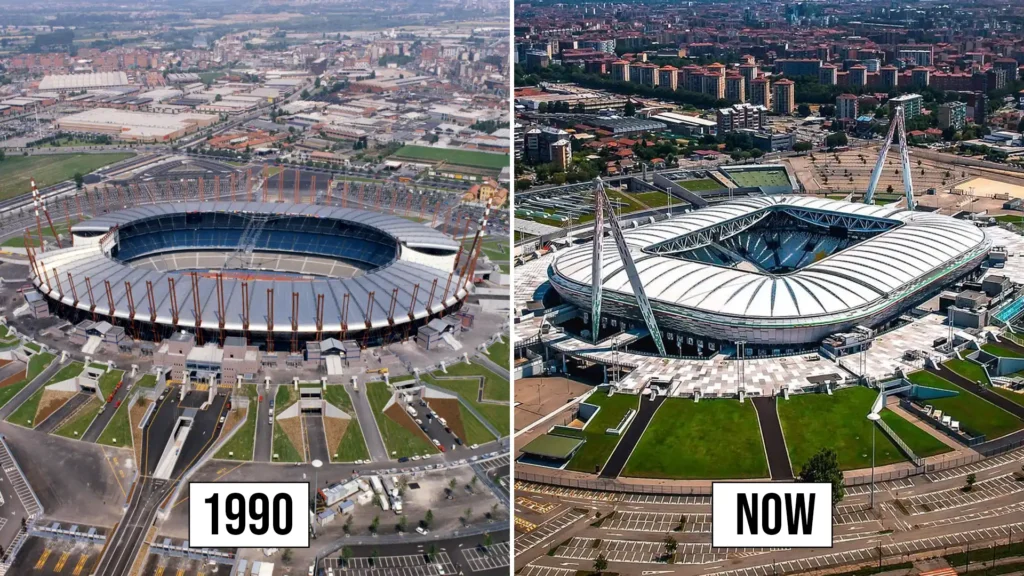
- Status: Demolished
- Capacity: 69,000.
- Built for Italia ’90, but quickly became infamous for poor sightlines and low attendances.
- Juventus and Torino abandoned it in 2006; demolished in 2009.
- Replaced by the modern Allianz Stadium.
🏟️ Stadio Renato Dall’Ara (Bologna)
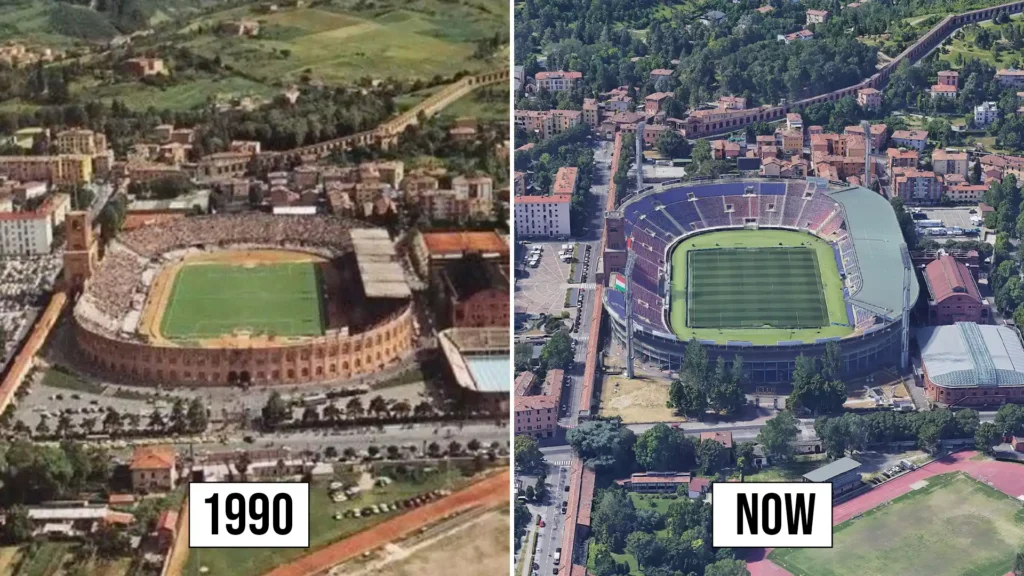
- Status: Active
- Capacity: 38,000.
- Home to Bologna FC.
- Historic but aging; redevelopment plans are ongoing.
🏟️ Stadio Artemio Franchi (Florence)
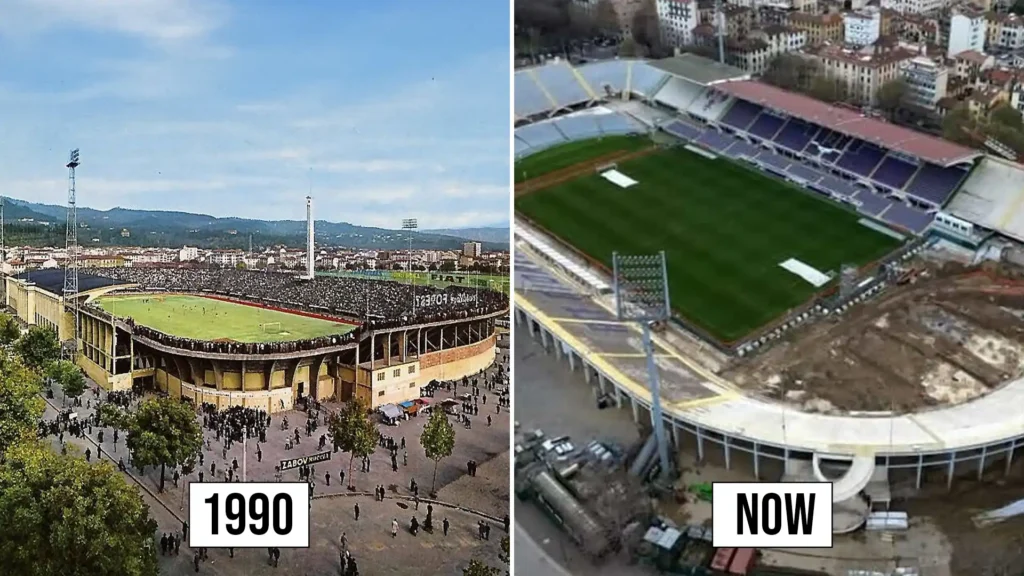
- Status: Active, under renovation
- Capacity: 43,000.
- Home to Fiorentina.
- Architecturally iconic (designed by Pier Luigi Nervi), but outdated.
- Currently undergoing major renovations for modernization.
🏟️ Stadio San Nicola (Bari)
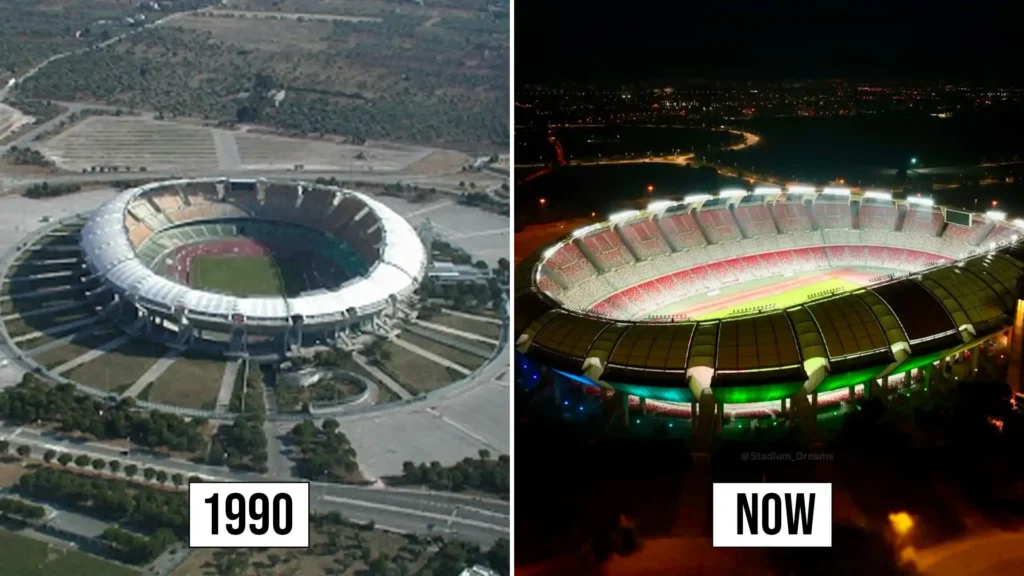
- Status: Underused
- Capacity: 58,000.
- Known as the “Spaceship” for its futuristic design.
- Hosted a semifinal in 1990.
- Still used by SSC Bari, but often half-empty since the club plays in lower leagues.
🏟️ Stadio Sant’Elia (Cagliari)
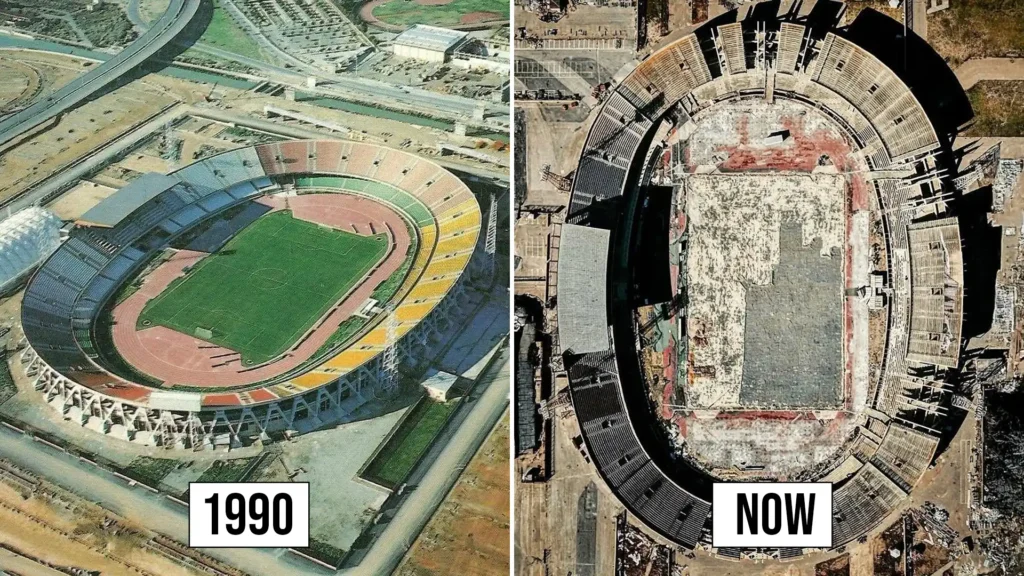
- Status: Demolished
- Capacity: 35,000.
- Hosted matches in 1990.
- Fell into disrepair, demolished in 2017.
- Cagliari currently plays at a temporary venue while awaiting a new stadium.
🏟️ Stadio Friuli (Udine, now Dacia Arena)
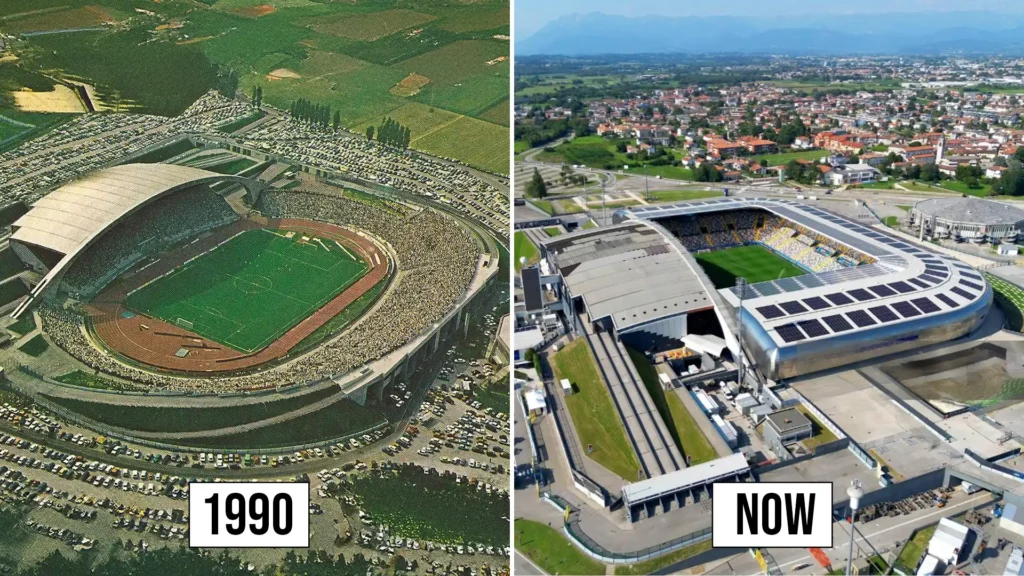
- Status: Thriving (rebuilt)
- Capacity: 25,000.
- Home of Udinese.
- Completely modernized in the 2010s into one of Italy’s best club stadiums.
🏟️ Stadio Luigi Ferraris (Genoa)
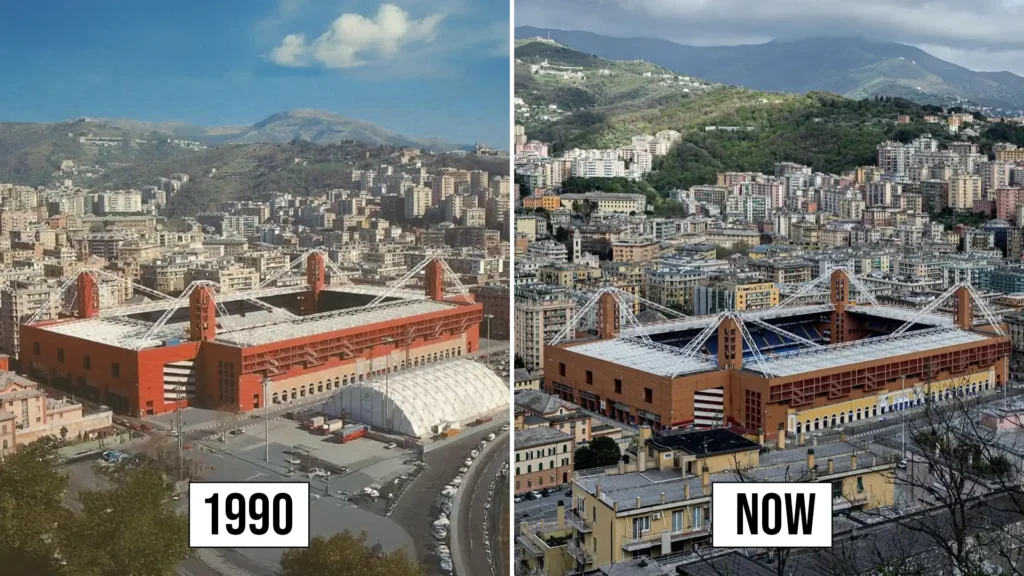
- Status: Active
- Capacity: 36,000.
- Shared by Genoa and Sampdoria.
- Compact, historic, and atmospheric — still a strong Serie A venue.
🏟️ Stadio Marcantonio Bentegodi (Verona)
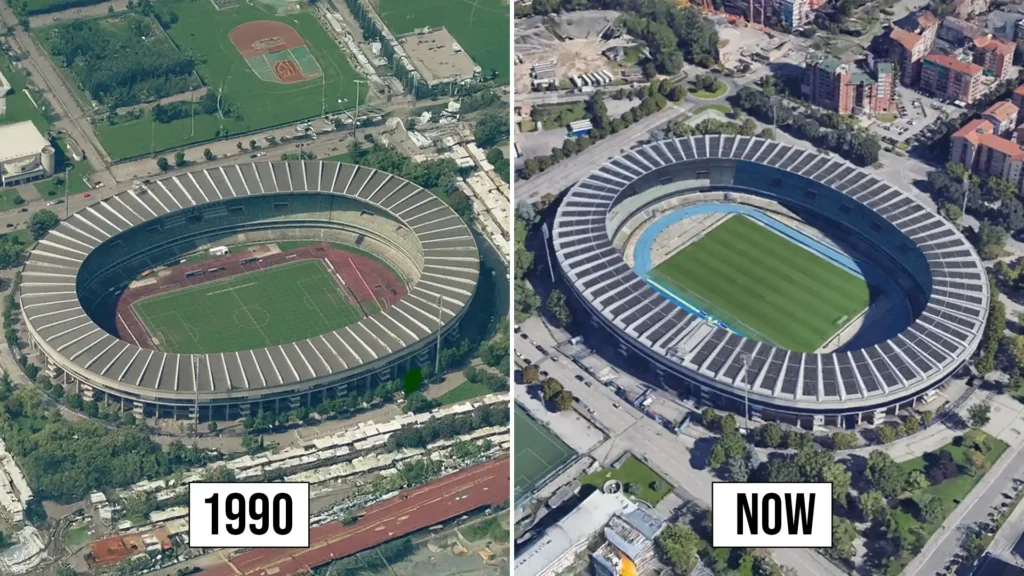
- Status: Active
- Capacity: 39,000.
- Home to Hellas Verona.
- Still used regularly in Serie A.
🏟️ Stadio La Favorita (Palermo, now Renzo Barbera)
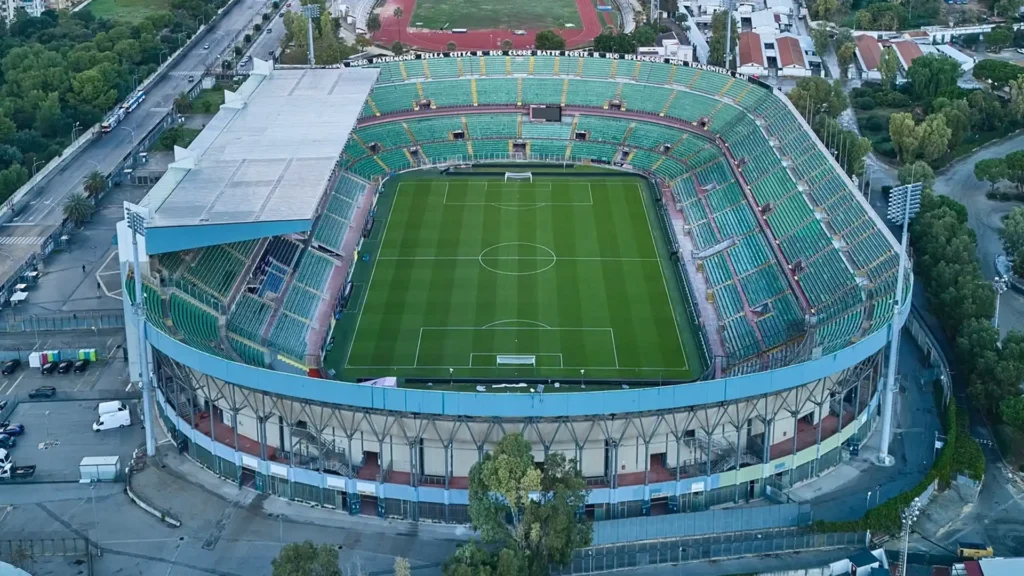
- Status: Active
- Capacity: 36,000.
- Home to Palermo FC.
- Has hosted Italy national team games.
Winners and Losers
✅ Thriving/Modernized: Olimpico (Rome), Diego Maradona (Naples), Dacia Arena (Udine), Luigi Ferraris (Genoa), Bentegodi (Verona), Renzo Barbera (Palermo).
👌 Active but aging: San Siro, Dall’Ara, Artemio Franchi, San Nicola.
❌ Gone: Delle Alpi (demolished), Sant’Elia (abandoned).
The Italia ’90 stadium legacy is complex:
- Italy spent massively, but some projects (like Delle Alpi and Sant’Elia) turned into costly mistakes.
- Yet most venues remain active thanks to their club tenants.
- Several are now undergoing renovations — but Italy still lags behind other nations in modern stadium infrastructure.
👉 Lesson: Italia ’90 shows the risks of overbuilding without long-term planning, but also proves that historic football culture can keep even outdated venues alive for decades.

